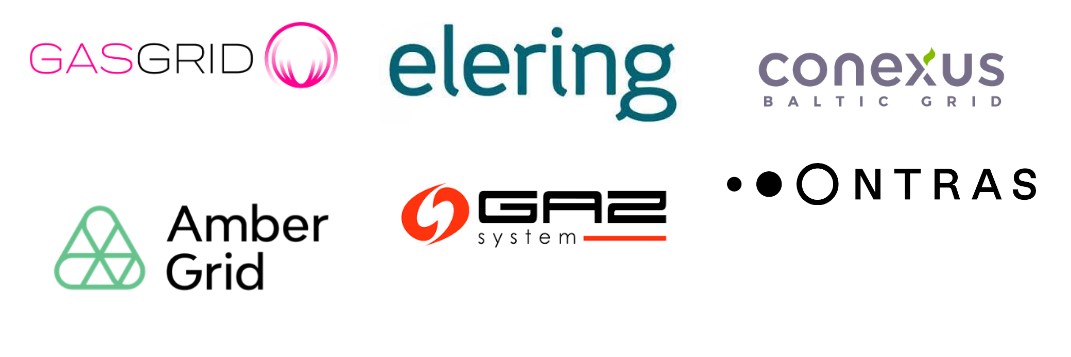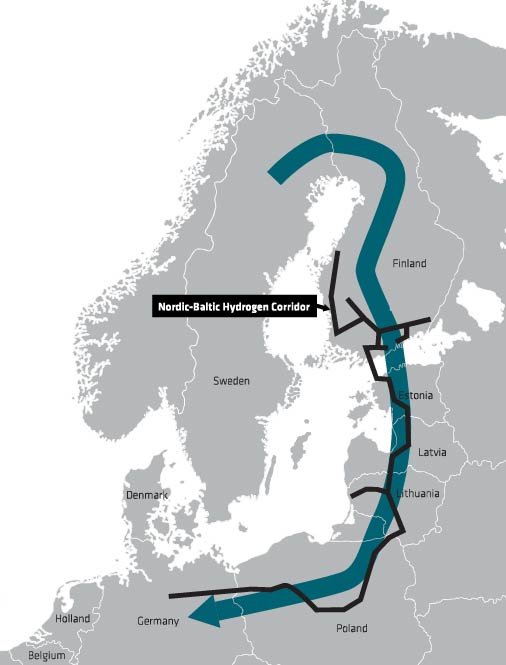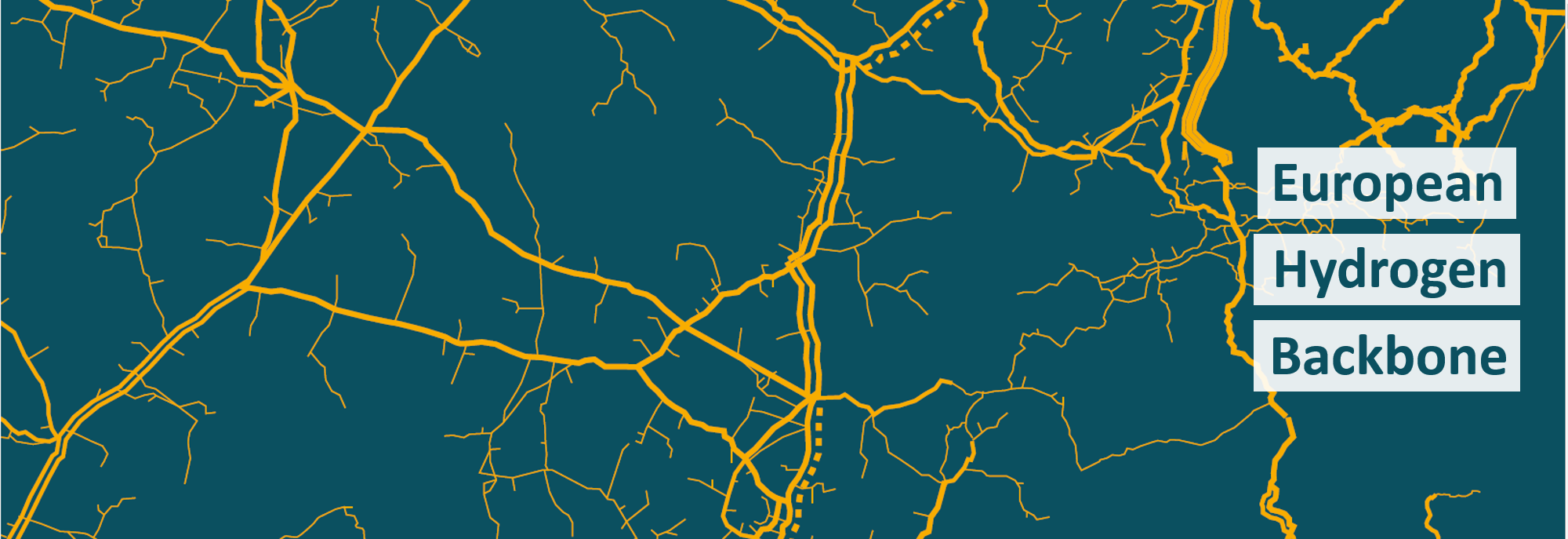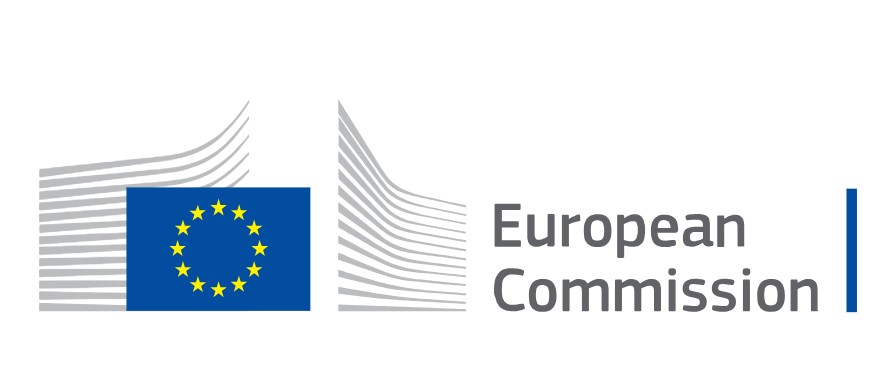Nordic-Baltic Hydrogen Corridor
Nordic-Baltic Hydrogen Corridor is a cross-border hydrogen infrastructure project, that enables hydrogen transmission in Finland, Estonia, Latvia, Lithuania, Poland, and Germany.
The parties to the project are gas transmission system operators (TSOs): Gasgrid, (Finland), Elering (Estonia), Conexus Baltic Grid (Latvia), Amber Grid (Lithuania), Gaz System (Poland), and ONTRAS (Germany).
Nordic-Baltic Hydrogen Corridor connects different hydrogen supply, demand, and storage points along the corridor route, creating a regional hydrogen system and market.
Why a hydrogen corridor is needed
For Estonia, this hydrogen infrastructure would help to realise additional renewable electricity generation assets providing the electricity market participants with an additional market where to sell their energy, if they convert renewable electricity and water into green hydrogen.
For the electricity system, hydrogen infrastructure would allow for long-term energy storage in periods of excess generation and the possibility of using hydrogen-powered power plants to supply the electricity system with power in periods of low renewable electricity generation, helping to guarantee the security of supply. Creating additional cross-border energy infrastructure enhances energy security by enabling it to cover both Estonia’s and Europe’s energy needs with local energy supply, reducing the need for third-country energy imports. Hydrogen and its derivatives enable the decarbonization of hard-to-abate sectors like industry, shipping, and aviation, where full electrification is either technically not feasible or excessively expensive.
For Europe, this project strongly supports the EU’s hydrogen strategy and the REPowerEU plan, reducing the reliance on Russian energy imports. The project helps to achieve EU climate goals, such as the EU’s Green Deal program and the Fit for 55, paving the way to a new sustainable economy.
Phases of the project
In the first phase of the project, a pre-feasibility study will be carried out, in which the project's technical and economic aspects will be assessed.
Based on the pre-feasibility study recommendations, a decision on the continuation of the project development would be made. The following phases in the project would include the engineering and permitting phase, construction, and commissioning.
The Nordic-Baltic hydrogen corridor is on the list of the European Projects of Common Interest
On November 28, 202, the European Commission announced that the Nordic-Baltic Hydrogen Corridor (NBHC) is included on its 6th list of European Projects of Common Interest (PCI).
The Commission will now submit the PCI list to the European Parliament and the Council for approval. The non-objection period for the co-legislators is expected to be finalized in Q1 2024.
By being part of the PCI-list, the NBHC is deemed as a key cross-border infrastructure project that will contribute to the EU’s energy independence, climate targets and to establishing an affordable, secure and sustainable European energy system.
The PCI status will support the project realisation through the support of the Commission and Member States, by enabling simplified permitting processes and the possibility to apply for funding from the EU’s Connecting Europe Facility program.



